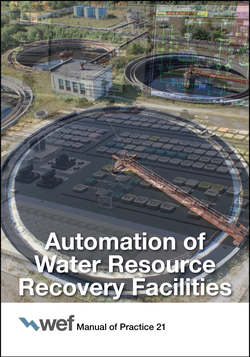Читать книгу Automation of Water Resource Recovery Facilities - Water Environment Federation - Страница 231
На сайте Литреса книга снята с продажи.
5.4.4 Flow Splitting with Valves or Gates
ОглавлениеWhen splitting flow to various legs using valves or gates, the main control for each valve or gate is a simple flow control loop. The flow to each leg is used as the process variable and the valve or gate is opened or closed as needed to maintain that flow. The flow setpoint for each leg is typically a percentage of the total flow to the system. For example, if it is desired to equally split the flow to three basins and the total flow is X, then the flow setpoint to each of the three legs would be 1/3 × X. However, in a closed system with several valves or gates, the total flow into the system may not exactly match the flow for each leg, thereby causing instability in the control. For that reason, one of the legs is typically left in an uncontrolled state, with the valve in a static position.
The leg with the static position will then account for any minor discrepancies between total flow and the sum of individual flows. This position should be intermediate to the other valve positions so that it is controllable. If the uncontrolled valve becomes the most-open or most-closed valve, either its position should change or another valve should be chosen as the uncontrolled valve. Of course, if a two-valve system is only used, it is not possible to have the uncontrolled valve in an intermediate position. In this instance, one of the valves will control the flow and the other will have a slower control loop to maintain both valves within a desirable range of operation. The desirable range of operation is to leave one of the two valves as open as possible while still achieving a controllable flow split.
It is common to use MOV control as a higher order (and slower) control of the system. The MOV control will adjust the position of the MOV if it is not in a desirable range (e.g., as open as possible while still allowing control). This will cause flow in the other legs to decrease, and their flow control loops will increase the position of their control valves to maintain the system.
